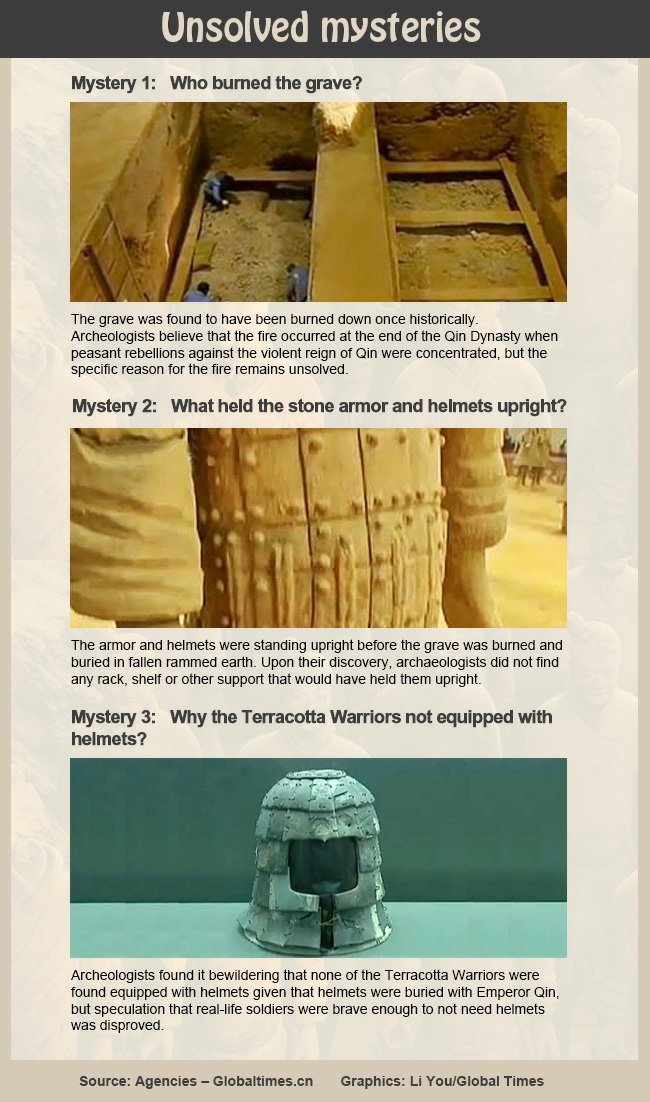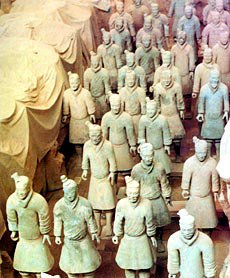HOME >> SCI-TECH
Qin armor unearthed at tomb of China's first emperor
Source:Globaltimes.cn Published: 2013-12-19 16:27:00
| Latest News |
| Qin armor unearthed at Terracotta site A 13,000-square-meter site at the mausoleum of China's first feudal emperor, which is predicted by archeologists to be a huge underground arsenal, is now under preliminary excavation. The excavation is expected to be a potentially major archeological discovery that would help the world to learn more about the history of the Qin Dynasty (221BC-206BC). |
| Details |
| Qin Armor and Helmets |
| Unsolved Mysteries |

| Backgrounder |
 Portrait of Emperor Qin Shihuang Photo: china.org.cn |
About Qin Shihuang Emperor Qin, or Qin Shihuang, first unified the Chinese territory in a centralized state as an absolute monarch in 221BC, and founded the Qin Dynasty. |
 Qin terracotta soldiers in battle array Photo: china.org.cn |
About the Mausoleum of Emperor Qin Shihuang The Mausoleum of Emperor Qin Shihuang (the first Emperor of Qin) is five kilometers east of Lintong county, 35 kilometers from Xi'an in Shaanxi Province. On its south is Lishan Mountain and to the north is Weihe River. It is the biggest imperial mausoleum in ancient China. In 196I, the State Council decided the Mausoleum of Emperor Qinshihuang would be a key cultural relic under state protection. Mausoleum of the First Qin Emperor has been inscribed in the UNESCO World Heritage List. |
| How was the mausoleum found? In the spring of I974, when peasants sank a well near Xiahe village three li (1.5 kilometers) east of the Mausoleum of Emperor Qin Shihuang burial terracotta warriors and horses were found. A team of archaeologists was sent to the burial site and after several years' excavation, an unrecorded wonder was brought to light that had caused a sensation all over China as well as throughout the world. It has provided another opportunity for study of the civilization of that period. | |
For more, please click>>
Mausoleum of Emperor Qin Shihuang (259 BC- 210 BC)
China archives of world heritage - Qin Shi Huang Mausoleum
Earlier findings
Experts unearth new terracotta warriors
Digging for clues in ancient Qin
Earliest bronze armor pieces excavated in NW China
Shield unearthed at Museum of Qin Shihuang Terracotta Warriors and Horses
Web editor: guwei@globaltimes.com.cn
Posted in: Discovery